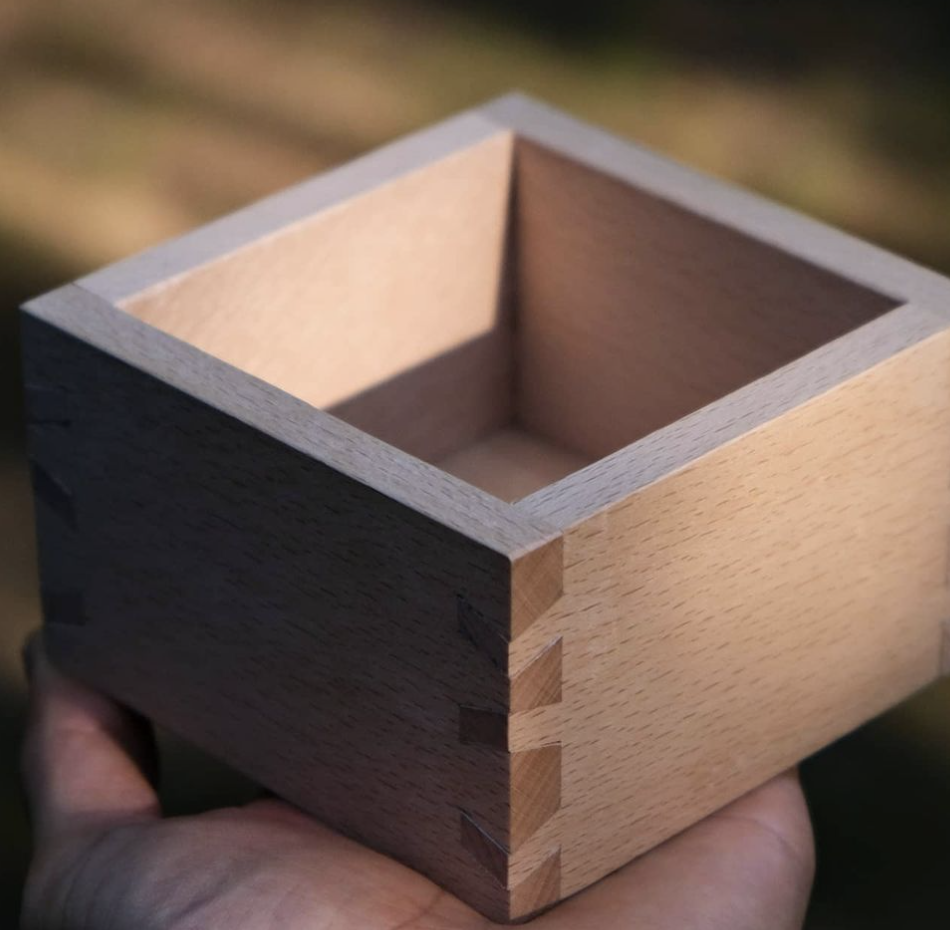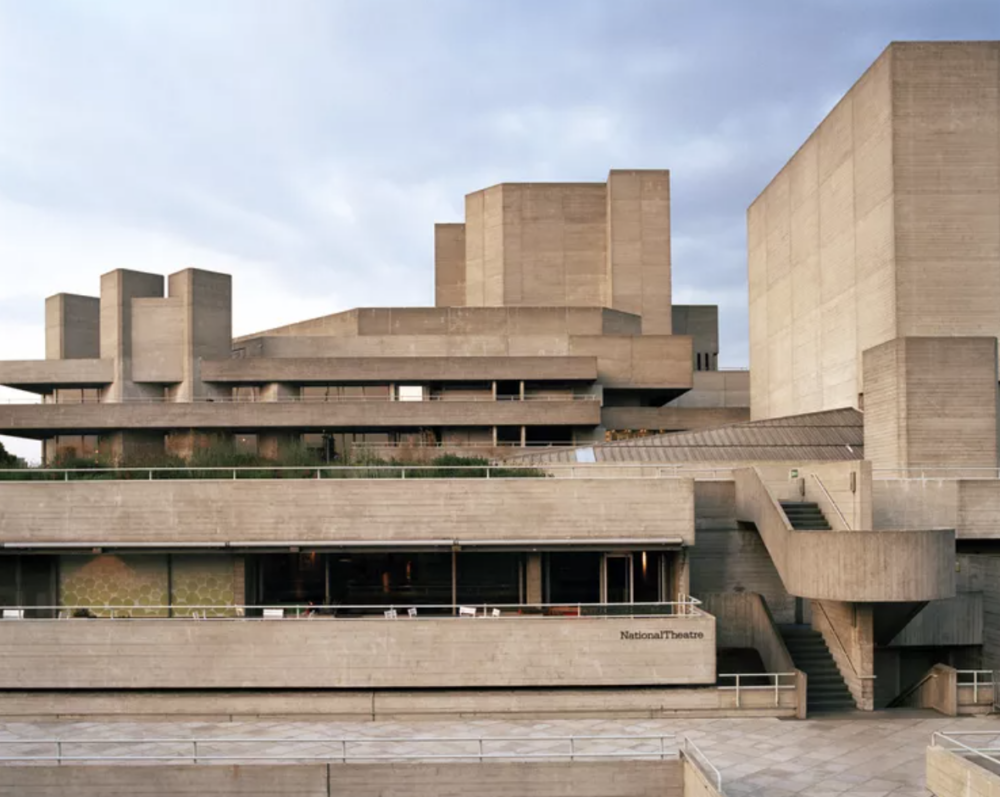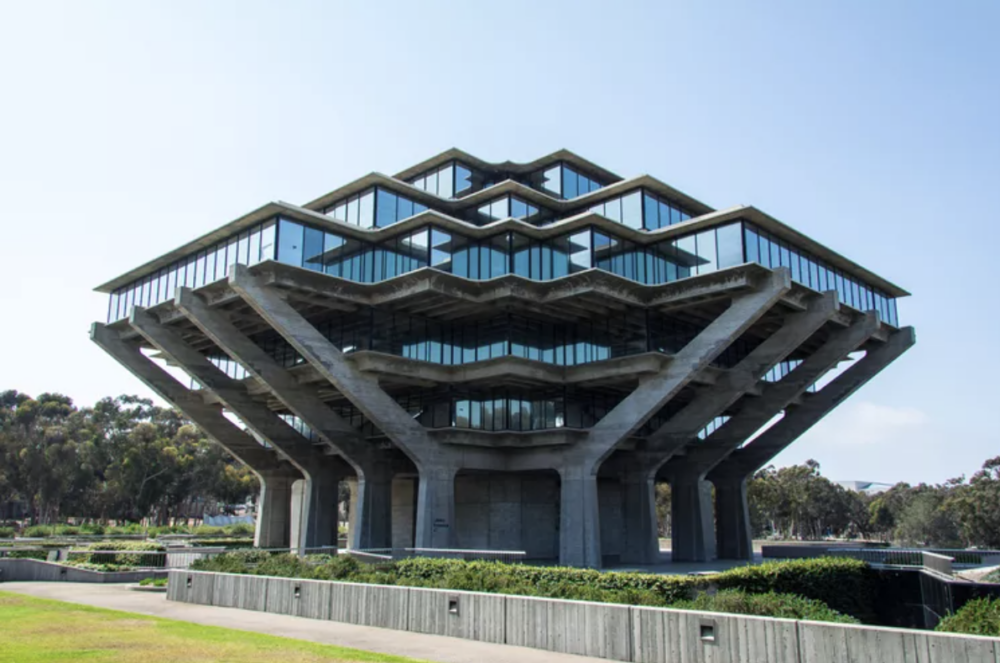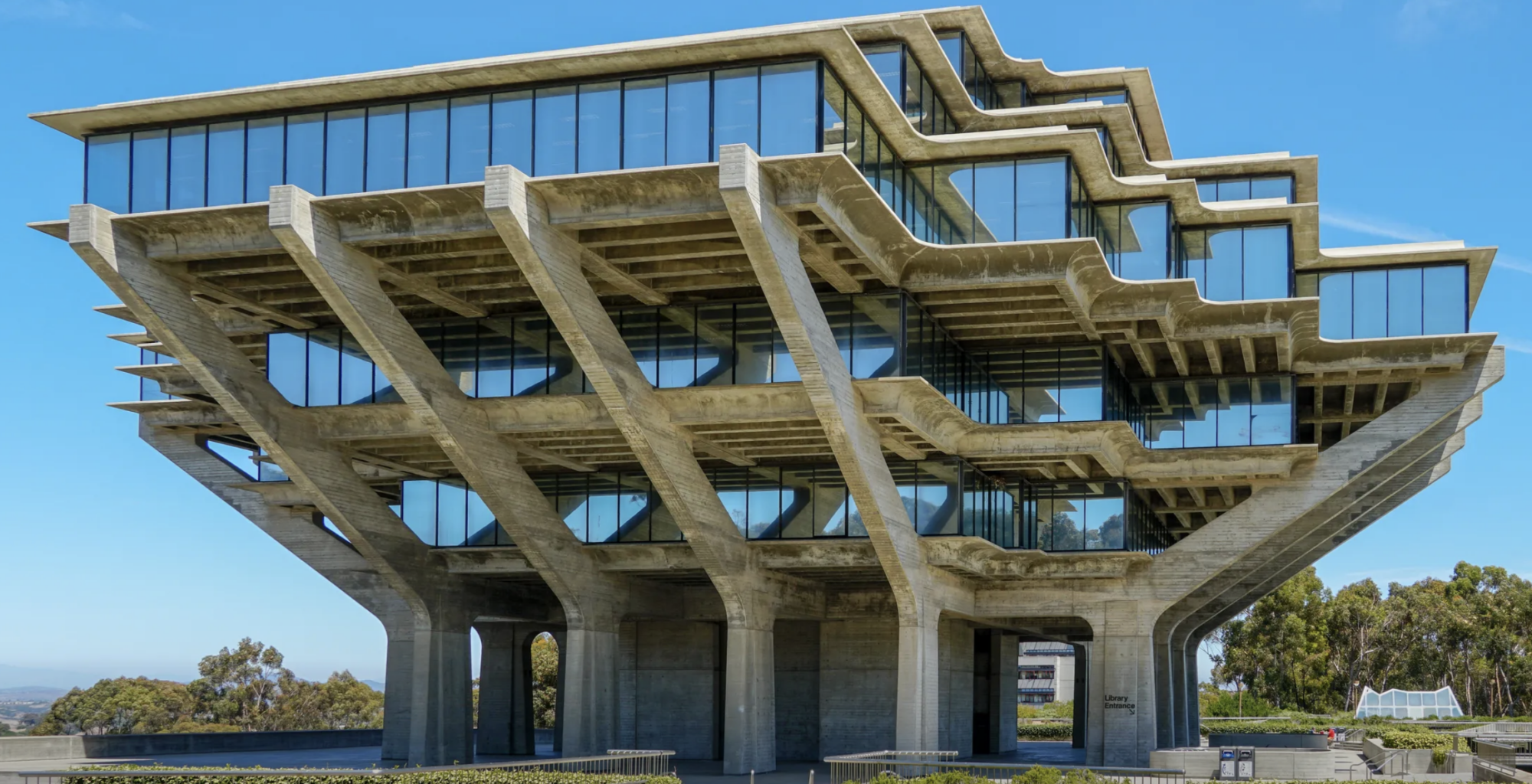My up-cycling project involves the Miyadaiku aesthetic, an ancient form of Japanese carpentry which aims to build structures without the use of fasteners of any kind: screws, glue, nails, etc. This is possible by strategically forming interacting geometrical features between two parts. In my project I will be using a bunch of almost spent spools of filament to print a structure that will fit together solely with slots and dowels. This will require me to “spice” the many spools together throughout the print, likely causing a multicolored final product.That being said, if I were to recreate my project with an opposite aesthetic it would likely be in brutalism.

Brutalism is an architectural style originating in the mid-20th century, characterized by its use of raw concrete, geometric forms, and a focus on functionality. First seen in post-war Europe during the 1950s and 1960s, Brutalism aimed to convey honesty in materials and a sense of strength through the use of bold and imposing structures. The term “brutalism” derives from the French word “brut,” meaning raw or rough, reflecting the exposed, unfinished appearance of concrete commonly used in these buildings. Below are a few examples of brutalism:


I believe Miyadaiku and brutalism are opposites for the following reasons. First, the form of Miyadaiku’s requires extensive time of the front half of the design to figure out how all of its parts will delicately and with high tolerance, fit together. Brutalism structures on the other hand are design as unfinished and their buildings are easily put together by repetitively pouring messy concrete over itself. I am not saying brutalism lacks design or difficulty but the bulk of the thinking within the two aesthetics lie in different places. Miyadaiku makes use of the natural resource of wood, giving it a sustainable fresh and ancient look. Brutalism’s extensive used concrete gives it a harsh, postmodern industrial look. More so, Miyadaiku structures are solely built by hand and require many parts for even the smallest structures while brutalist structures reflect minimalism and require heavy machinery.
It terms of my actual design, if I were to recreate it with brutalism in mind, I would keep the same structure but cast the entire piece. I would likely create a two part sand casting mold by printing the positive of the design first. Then I would use a single pour of concrete to finish it. This recreation of the project would likely not hit the up-cycling component of the requirement but, I think the final product would be pretty cool.
Sources:
-
“What Is Brutalist Architecture? Key Design Elements to Know.” Better Homes & Gardens, www.bhg.com/what-is-brutalist-architecture-8285822. Accessed 13 Feb. 2024.
-
“Japanese Carpentry.” Wikipedia, 22 Nov. 2020, en.wikipedia.org/wiki/Japanese_carpentry.


4 Comments. Leave new
Hey Max! I appreciated your comparison between Brutalism and Miyadaiku. While I was familiar with Brutalism (like the Engineering Center), Miyadaiku was entirely new to me. I find it fascinating to explore the challenge of constructing a building without relying on fasteners or adhesives. As I examine both architectural styles, I notice a commonality in their emphasis on clean-cut lines. However, I’m curious about your thoughts on how their designs compare beyond this shared characteristic. I’m eagerly anticipating seeing the finished result of your exploration!
Hi Hailey, thank you for reading my post! I agree with you that even though there are many contrasts between Brutalism and Miyadaiku, their final products share simplistic geometric patterns and clean cut lines. I found it to be really cool the way that their construction, material choices and overall vibes could be so different yet they share visual similarities.
Hi Max! I love how you contrasted Brutalism to Miyadaiku. I’d heard of Brutalism before (a.k.a. the Engineering Center), but Miyadaiku was something I didn’t have any knowledge about. I think it’s an interesting challenge to try to make a structure without the use of any fasteners or adhesives.
However, when I’m looking at the different structures, I see that they look similar in their use of clean-cut lines – I was wondering what you feel about the comparison in design between the two? I’m excited to see your final product!
Hi Hailey, thank you for reading my post! I agree with you that even though there are many contrasts between Brutalism and Miyadaiku, their final products share simplistic geometric patterns and clean cut lines. I found it to be really cool the way that their construction, material choices and overall vibes could be so different yet they share visual similarities.